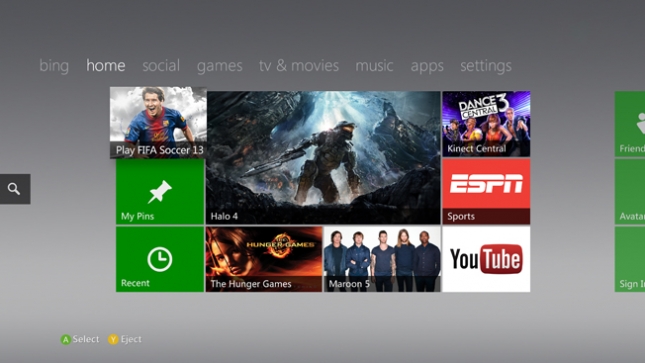Nintendo have become exemplary when it comes to innovation in the hardware space. They are pioneers, and their pioneering in new and bold areas has proved incredibly fruitful – The Wii, with its motion controls, and the DS, with its dual screens, are two of the most successful video game systems in history. Nintendo’s designs have been mimicked by the other two console manufactures, by Sony, rather overtly with the Playstation Move, and mimicked more subtly by Microsoft’s Kinect; the “inspiration” behind these two products is obvious.

To be perfectly fair, Sony and Microsoft have created new and interesting ways to interact with our games; the PS Vita has it’s back touch pad, and although the Kinects existence is probably solely due to the Wii popularising motion controls, it’s far from a straight replica. But whilst innovative, neither idea has brought Sony or Microsoft the kind of tremendous success the Wii or the DS has for Nintendo, and neither idea is the main selling point of the hardware, it’s merely a feature.
So, considering the success of Nintendo’s unique hardware, and the general competitiveness of today’s market, is it time Sony and Microsoft became a little more daring in the design of their consoles?
Well, yes and no.
No, because while I would like them to refine their controller designs, and produce innovative peripherals, I think radically changing the default method of input would be a huge mistake. I think this for two reasons, the first being core gamers love their Xbox 360 controllers and their Dualshocks, and there’s a reason for that; they just work. The second being the sort of design I could see them producing would likely be something that doesn’t really improve the gameplay experience, but simply changes the method of input, which is absolutely welcome, but as a peripheral and not the primary input device.
Yes, because innovation isn’t strictly confined to hardware. This generation both Microsoft and Sony have created innovative software, whether that be through the enormous advancement in online gaming with Xbox Live, making gaming ever more social, or Uncharted redefining the action-adventure genre, or the introduction of achievement systems, rewarding gamers for gaming. There’s a myriad of ways MicroSony have changed gaming this generation, and it’s been mostly through their software, and it’s been awesome. That’s the direction I want to see them continue taking. When it comes to their hardware, put more polygons on my screen and let me do more thinks at once with ease, but don’t take away my beloved controller, and instead continue to make compelling software.


When it comes to games, these two have us covered. Sony have a world class array of development teams, and though Microsoft have been subject to criticism over a lack of first party titles, they’ve been opening studios left and right over the last couple of years, so I’m confident they’ll be up to standard in that department next generation. When it comes to the operating systems and user interface of Orbis and Durango, we’ve had next to no indication of what they’ll entail, but I don’t see why we won’t be seeing further great progress in this area. The latest Orbis rumour mentioned an interesting software feature, it stated users will be able to seamlessly switch between applications by pressing the PS button on the controller – Sony is “trying to make it as fluid as possible.”
These sort of “miniature USPs”, if you will, these little innovations, are the way to go. Individually they may seem insignificant, but collectively they’re bordering revolutionary.



















